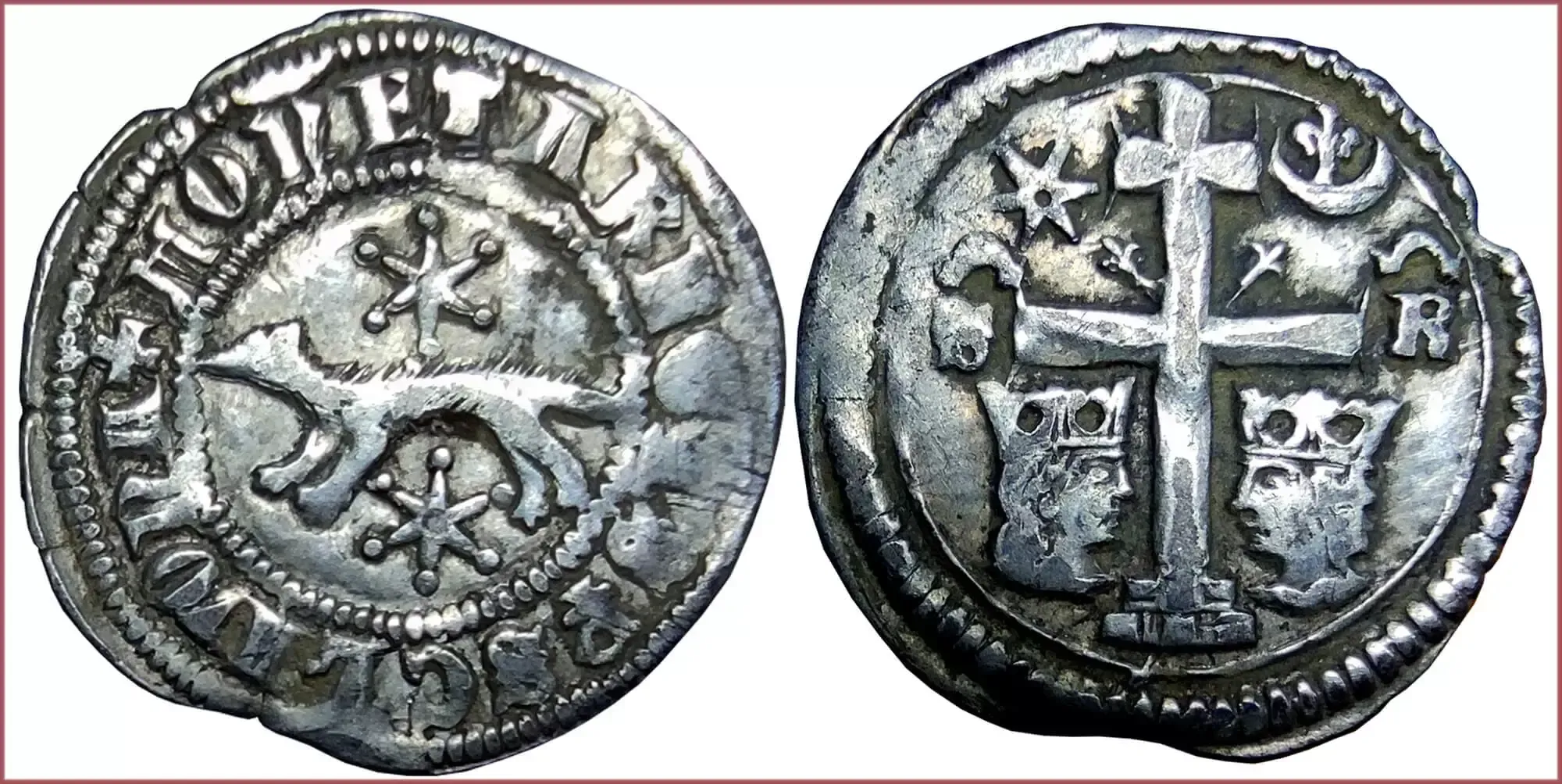BANOVAC: COIN OF SLAVONIA (HUNGARY)
Banovac (denár), 1270-1272: Province of Slavonia (Hungary)
Slavonia — historical region in the east of modern Croatia. In the status of Slavonic Banovina it existed as part of the medieval Hungarian kingdom. It was located on the territory of modern Croatia, Bosnia and Herzegovina, and existed since the 13th century until 1476, when it was annexed to the Banovina of Croatia.
Ruler: Stephen V (Hungarian "István V") — King of Hungary and Croatia between 1270 and 1272, and Duke of Styria from 1258 to 1260.
MONETA REGIS P SCLAVONA (Moneta Regis pro Sclavonia): Money /coin, currency/ of King for Slavonia.
Marten between two hexagonal stars.
The marten (Croatian "Kuna") — valuable fur-bearing animal that inhabits the coniferous and deciduous forests of the Northern Hemisphere. In ancient times, its fur was used as money by many tribes (mainly Slavic). This was one of the reasons for naming the former currency of the Republic of Croatia the kuna (used 1994-2023).
S - R: Stephanus Rex (Stephen King).
Patriarchal cross (double), flanked by a king and queen (crowned male and female), a star with a hole inside and a crescent with a heraldic lily.
Zagreb Mint (Croatia).
- Silver: 15 mm - 0.95 g
- Reference price: 37$
COIN BANOVAC — WHERE & WHEN (coins catalog: by names & emitents)
- HUNGARIAN STATES, 13th-14th centuries (Province of Slavonia): banovac (denár) = 2 obulus
BANOVAC as coin name.
Banovac — easily recognized silver coin of Slavonia (now part of Croatia) as part of the Kingdom of Hungary. It was issued for a little more than a century, starting in 1235. During the entire specified period, the design did not change significantly. In essence, it was a type of Hungarian denár coin.
It was an extremely beautiful for its time and high-quality Croatian silver coin (although the features of design and historical background force it to be called a Croatian-Hungarian coin), which was used far beyond the borders of Slavonia.
It is interesting that a half smaller coin with almost exactly the same design — the obulus — coexisted in parallel.
The name of the banovac coin most likely has the same etymology as the Romanian and Moldavian ban and comes from the expression "denarius banalis", which can be translated as "denar of ban" (in this context, ban — the title of local rulers, similar to viceroy, used in several states in Central and Southeastern Europe between the 7th century and the 20th century).
By the way, some catalogs do not use the term banovac when describing the mentioned coins, calling them simply denar. However, there are those who call these coins the term "banica".

